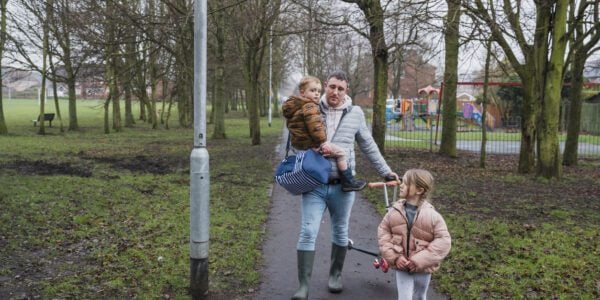New analysis quantifying the cost to the Exchequer and identifying those who stand to gain and lose from the state pension and long-term care financing reforms has been published today by the Care and State Pension Reform (CASPeR) research team with funding from the Nuffield Foundation.
This modelling analysis has shown that home-owners and people on higher incomes tend to gain most from both sets of reforms. Lower income renters can lose more in means-tested benefits than they gain in state pension income from the state pension reforms. People who already had care needs in April 2016 are the group most affected by the delay in implementation of the long-term care reforms: the cap would have particularly helped to protect the savings of those on modest incomes who are currently funding their care from their savings.
The more generous care uprating scenarios all increase public spending on long-term care by 2030. They significantly reduce the extent to which the planned long-term care reforms they tend to favour those on higher incomes: they render the impact of the reforms less uneven across income groups. By 2030, uprating the state pension by earnings rather than the triple lock, which the Chancellor implied in the Autumn Statement could be the policy of a future Conservative administration, would go some way to paying for the more generous long-term care uprating scenarios. Uprating pensions by prices – although not allowed under present legislation – would more than pay for more generous uprating of the care system.
Two new reports
The analysis is presented in two new reports, which contextulise earlier findings of the CASPeR research team. The first of these, Interactions between state pension and long-term care reforms: a summary of findings, summarises the findings from the research project which aims to promote informed debate on how the reforms could evolve, highlighting the interactions between the two systems.
The second report, The costs and distributional effects of alternative uprating policies, details the projected impacts of the reforms showing that the effects of both sets of reforms will depend on how details of the systems are set in future years, and in particular how components of the systems are adjusted each year – ‘uprated’ – for inflation. This has been achieved through development and linkage of three simulation models: the PPI’s dynamic microsimulation model; the PSSRU’s (aggregate) long-term care projections model; and UEA’s microsimulation model, CARESIM, which simulates long-term care charges.
Ruth Hancock, Professor in the Economics of Health and Welfare at University of East Anglia said:
“There is an active debate on uprating the state pension by the triple lock but much less discussion of how to uprate the long-term care and disability benefits systems. The cap on care costs planned for 2020 generally favours the better-off. If a future government decides to move towards less generous uprating of state pensions, our research finds that using some of the savings on more generous long-term care and disability benefits uprating would particularly help lower income older people needing care”
Raphael Wittenberg, Associate Professorial Research Fellow from the Personal Social Services Research Unit at the London School of Economics said:
“Our research highlights the value of analysing state pension and long-term care reforms in tandem. There is a policy choice about what proportion of total public expenditure on pensions, long-term care and disability benefits for older people should be specifically targeted on those with care needs. Our analyses show how the annual uprating rules for pensions, long-term care and disability benefits could be changed to increase the proportion targeted on people needing care.”
Chris Curry, Director of the Pensions Policy Institute said:
“Outcomes from state pension reform and long-term care reform are linked, and the impacts of reforms in these areas need to be considered together. While removing the triple lock would reduce the cost of state pension provision, it would also increase state spending on long-term care costs.”





















































